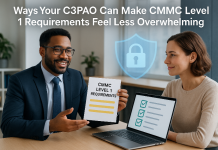While the news may have been dominated by headlines of businesses on Main Street going bankrupt, millions of the country’s smaller businesses are facing the same fate. Court records show that Chapter 11 bankruptcy filings increased by 20 percent in 2020, and for February 2021, the country saw 63, 55 bankruptcy filings. If you are a small business owner contemplating whether to file and how to save your business, you are not alone. And while there are other options for businesses struggling to recover from disasters or insolvency, filing for bankruptcy can be a chance to rebuild. While the process can seem daunting and complicated, there is hope for small businesses choosing the bankruptcy route right now – and it all begins with knowing the right moves to make.
Decide On Whether Your Business Has Long Term Viability
Before you can decide whether to file for bankruptcy or what kind of bankruptcy option is right for you, entrepreneurs need to be clear on the long-term prospects of their business. If your business has been losing sales, profits and returns for a sustained amount of time, it may be time to re-examine the long-term viability of your small business. For instance, if product releases continuously miss the mark with your customers or you incur a loss for continuous financial periods, it may not be operational in the long term.
However, if your business, like millions of other small businesses, has found itself in a rough patch and needing relief from your creditors recently, then you may qualify for the new Subchapter 5 option under Chapter 1 bankruptcy. Another option for businesses that prefer reorganization instead of liquidation is to file for Chapter 13, which gives the business a chance to file a repayment plan with the court. Many SME owners that have their personal assets invested in their business tend to opt for a Chapter 13 instead of a Chapter 7 filing, since it reduces the risk of their assets being seized.
Get To Know The Pros And Cons Of The New Sub Chapter 5 Option Before Filing
Another important thing to think about is whether the bankruptcy option you are choosing is the right one for your goals. Each option comes with its own regulation, perks and drawbacks, so it is a good idea to get some legal advice on the bankruptcy process and options available. A good example is the recently introduced Subchapter 5 filing option which is touted as a faster bankruptcy option for businesses who want to remain operational. However, the option still comes with a hefty financial fee – the filing fee alone is $1,717. The option also only applies to small businesses that have unsecured and secured loans of less than $2,725, 625.
Also Read: Pros and Cons of a businessman. Small Business: Advantages and Disadvantages
On the other hand, your business can continue to operate and you can get temporary relief from creditors. For businesses looking to rebuild after bankruptcy, this can be a viable option. It gives you time and space to negotiate your agreements with creditors, and work out a repayment plan that works for you and your business.
How Intertwined Are Your Personal And Business Finances?
Another thing to think about is just how intertwined your personal and business finances are. Mixing business and personal finances is generally advised against, but many small business owners still do. Not only does it distort the true financial picture of your business, but when filing for bankruptcy, it can put your personal assets at risk for liquidation. If you have assets invested or used as a personal guarantee for business assets, creditors can come after your home, car, or other personal assets to cover any outstanding debts.
To avoid this, it is recommended that you file for personal bankruptcy alongside your business bankruptcy application. This stops the collection of debt in both your business and personal life. You can either file for Chapter 7 or Chapter 13. Chapter 7 applies to those who lack enough income to repay their debt, such as an entrepreneur who has lost his sole source of income. Alternatively, filing for Chapter 13 gives you a timeline to repay your debts while keeping your assets.
Finally, while bankruptcy does not have to signal the end of your business, it does mean that some significant changes will be needed. Having a plan of action like ways to cut costs and generate revenue is always the best way forward. It is a chance to reorganize your business for the better.





































